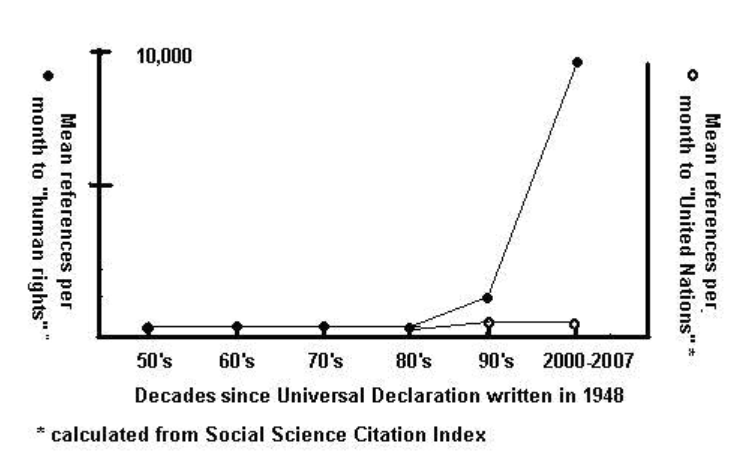The UN Resolution for the Culture of Peace
TRANSCEND MEMBERS, 5 Aug 2019
David Adams | Transition to a Culture of Peace – TRANSCEND Media Service
1 Aug 2019 – This summer and fall is seeing an increase in the number of international conferences dedicated to the culture of peace and basing their analysis on the Declaration and Program of Action for a Culture of Peace that was adopted 20 years ago by the UN General Assembly.
The UN resolution provides a holistic, positive view of peace. For each of the eight aspects of the culture of war, it proposes the alternative as described here. The resolution proposes specific actions to promote each of these eight program areas. And furthermore, it calls for a global movement for a culture of peace through partnerships between an among international, national and civil society organizations promoted through sysems of information exchange (such as the Culture of Peace News Network) on their initiatives.
The struggle for a culture of peace could gain much more force if this resolution were used as the basis for analysis and practice by more organizations around the world, but unfortunately it is relatively unknown.
The situation reminds me of the use of another landmark UN document, the Universal Declaration of Human Rights (UNDHR).
The adoption of the UNDHR by the UN General Assembly in 1948 did not immediately yield results. For the first 40 years the document sat on the shelf and was rarely mentioned, as shown in the following graph which shows the citations of human rights in academic publications as monitored by the Science Citation Index. It has only in recent years that references have exploded into thousands of times per year.
Now over 70 years after its adoption, the Universal Declaration of Human Rights has been taken up by thousands of other organizations and struggles in all social movements as a powerful tool for justice.
We may assume that the increased attention to human rights after the 1970s was largely due to the Nobel Peace Prize of 1977 to Amnesty International because of their efforts for human rights.
Hopefully, we will not have to wait another 20 years for such effective use of the Declaration and Programme of Action on a Culture of Peace. The work for culture of peace has been nominated for the Nobel Peace Prize in recent years, and if it were to be recognized by the Prize, that could help produce the kind of universal recognition and historical impact as that of the UNDHR.
_________________________________________________
 Dr. David Adams is a member of the TRANSCEND Network for Peace Development Environment and coordinator of the Culture of Peace News Network. He retired in 2001 from UNESCO where he was the Director of the Unit for the UN International Year for the Culture of Peace. Previously, at Yale and Wesleyan Universities, he was a specialist on the brain mechanisms of aggressive behavior, the history of the culture of war, and the psychology of peace activists, and he helped to develop and publicize the Seville Statement on Violence. Send him an email.
Dr. David Adams is a member of the TRANSCEND Network for Peace Development Environment and coordinator of the Culture of Peace News Network. He retired in 2001 from UNESCO where he was the Director of the Unit for the UN International Year for the Culture of Peace. Previously, at Yale and Wesleyan Universities, he was a specialist on the brain mechanisms of aggressive behavior, the history of the culture of war, and the psychology of peace activists, and he helped to develop and publicize the Seville Statement on Violence. Send him an email.
Go to Original – decade-culture-of-peace.org
Tags: Culture, Human Rights, Nonviolence, Peace, Politics, Social justice, Solutions, UN, West, World
DISCLAIMER: The statements, views and opinions expressed in pieces republished here are solely those of the authors and do not necessarily represent those of TMS. In accordance with title 17 U.S.C. section 107, this material is distributed without profit to those who have expressed a prior interest in receiving the included information for research and educational purposes. TMS has no affiliation whatsoever with the originator of this article nor is TMS endorsed or sponsored by the originator. “GO TO ORIGINAL” links are provided as a convenience to our readers and allow for verification of authenticity. However, as originating pages are often updated by their originating host sites, the versions posted may not match the versions our readers view when clicking the “GO TO ORIGINAL” links. This site contains copyrighted material the use of which has not always been specifically authorized by the copyright owner. We are making such material available in our efforts to advance understanding of environmental, political, human rights, economic, democracy, scientific, and social justice issues, etc. We believe this constitutes a ‘fair use’ of any such copyrighted material as provided for in section 107 of the US Copyright Law. In accordance with Title 17 U.S.C. Section 107, the material on this site is distributed without profit to those who have expressed a prior interest in receiving the included information for research and educational purposes. For more information go to: http://www.law.cornell.edu/uscode/17/107.shtml. If you wish to use copyrighted material from this site for purposes of your own that go beyond ‘fair use’, you must obtain permission from the copyright owner.
